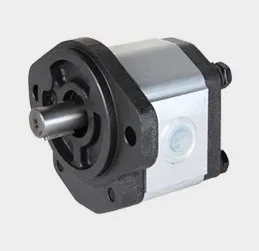Metal Stamping Techniques for Enhancing Motor Vehicle Production Efficiency and Quality
The Importance of Motor Vehicle Metal Stamping in the Automotive Industry
In the ever-evolving world of automotive manufacturing, precision, efficiency, and durability play crucial roles in the production of high-quality vehicles. One of the core processes that contribute to these attributes is metal stamping. This specialized process involves shaping and forming metal sheets into parts and components that are essential for motor vehicles. The significance of motor vehicle metal stamping cannot be overstated, as it is fundamental to producing everything from body panels to intricate sub-assemblies.
Understanding Metal Stamping
Metal stamping is a manufacturing process that transforms flat sheets of metal into specific shapes through various techniques such as bending, punching, and deep drawing. During the stamping process, sheets of metal are fed into a stamping press, where they are subjected to high pressure and specific tooling configurations that create the desired forms.
The process is widely used in the automotive sector due to its ability to produce large volumes of parts with consistent accuracy at a relatively low cost. Stamping presses can operate at high speeds, making it an ideal choice for mass production.
Applications in the Automotive Industry
Motor vehicle metal stamping has several applications within the automotive industry. Here are a few essential components produced through this process
1. Body Panels One of the most visible applications of metal stamping is in body panels, including hoods, doors, and fenders. These parts not only contribute to the car's aesthetics but also ensure structural integrity, safety, and aerodynamics.
2. Chassis Components The chassis of a vehicle, which includes the frame and undercarriage, requires robust metal parts to support the vehicle's weight and handle the stresses of driving. Metal stamping produces components like brackets, crossmembers, and suspension parts, all of which are critical to the vehicle’s performance.
3. Engine Components Many engine parts, such as valve covers and oil pans, are manufactured through metal stamping. Precision is crucial in these components to ensure proper fit and function within the engine assembly.
4. Safety Features Stamping is also employed to create safety-critical components like crumple zones and reinforcements, which are designed to absorb impact during collisions, thereby enhancing passenger safety.
motor vehicle metal stamping

Advantages of Metal Stamping
The advantages of metal stamping in the automotive industry are manifold
- Cost-Effectiveness When producing large quantities, metal stamping is highly cost-effective compared to other manufacturing methods. The reduction in material waste and high-speed production capabilities allow manufacturers to keep costs down.
- Precision and Reproducibility Stamped parts are known for their consistency and precision. With modern CNC (Computer Numerical Control) technologies, manufacturers can achieve tight tolerances that are essential for modern vehicle assembly.
- Material Versatility Metal stamping can be performed on a variety of metals including steel, aluminum, copper, and more. This versatility allows manufacturers to select the best material for each component, balancing factors like weight, cost, and performance.
- Strength and Durability Stamped parts typically exhibit greater strength than those made through other methods, thanks to the inherent properties of the metal and the manufacturing process. This increased durability is crucial for automotive applications where parts must withstand extreme conditions.
Future Trends in Metal Stamping
As the automotive industry continues to innovate and evolve towards electrification and automation, metal stamping is also set to advance. Trends such as advanced materials, lightweighting initiatives, and increased automation using robotics are shaping the future of stamping operations. The integration of Industry 4.0 concepts, such as data analytics and IoT (Internet of Things), will further enhance the efficiency and effectiveness of metal stamping processes.
Conclusion
In summary, motor vehicle metal stamping is a vital and strategic component of the automotive manufacturing process. Its ability to produce high-quality, precision parts at scale makes it indispensable in the production of vehicles. As the industry faces new challenges and opportunities, metal stamping will continue to be at the forefront, adapting to new technologies and materials while maintaining its core benefits. The future of automotive manufacturing is bright, and metal stamping will undoubtedly play a pivotal role in that journey.
-
Pros & Cons of Sand Casting: Products & ApplicationsNewsAug.19,2025
-
Advanced Crawler Drilling Rig for Confined Spaces-Baoding Hairun Machinery And Equipment Trading Co., Ltd.NewsAug.18,2025
-
Crawler Drilling Rig- Baoding Hairun Machinery And Equipment Trading Co., Ltd.|Pneumatic Power,Frame-Supported DesignNewsAug.18,2025
-
Precision OEM Valve Body Castings for Superior PerformanceNewsAug.18,2025
-
Crawler Mounted Drill Rig - Baoding Hairun Machinery | Underground Drilling SolutionsNewsAug.18,2025
-
Crawler Mounted Drill Rig - Baoding Hairun | Pneumatic Safety, Mining EfficiencyNewsAug.17,2025















